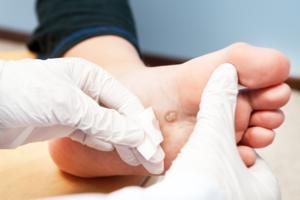![]() EXPERT
EXPERT
Dr. Steven Lam, D.P.M.
Podiatrist (Foot and Ankle Specialist)
- Albany, NY
- Temple University
- Accepting new patients
Warts
As summer is winding down, hopefully most people have managed to enjoy the nicer weather by spending their time outdoors. Going barefoot, wearing flip-flops, and swimming in...
Is dipping feet in hot water with Epsom salt supposed to help my heel spurs?
Is hammertoe genetic?
Why are my ankles swollen?
Excessive swelling can also be caused by too much salt intake, certain medications, vascular conditions, or even kidney and heart abnormalities. It is important for you to identify whether your swelling is "normal", or due to an underlying medication issue. This can be done by contacting your health care provider for evaluation.
Foot pain in the morning
Plantar Fasciitis can typically be managed with stretching exercises, anti-inflammatory medications, and activity restrictions/modifications. If the condition persists for a long period of time without treatment, a heel spur can form, and other modalities to treat the condition, such as cortisone injections, physical therapy, custom orthotics, and immobilization, may become necessary.
My suggestion is for you to do a google search on "plantar fasciitis stretching exercises", and pick a couple that you can do daily. I usually recommend holding the stretch for 10 seconds at a time, and repeating 10-15 times a day. If you can do a few stretches before you get out of bed, it can reduce the pain associated with post static dyskinesia. If your symptoms do not improve with stretching after a few weeks, you should definitely schedule an appointment with your local podiatrist to have this treated.
Ingrown toenail surgery now have thick ridged nails
The only way to truly know if your nails have fungus is to go to your podiatrist, have a nail sample taken and submitted to a lab for identification. The lab will be able to differentiate whether there is fungus present in the nail or not. If there is no fungus, your nail bed was damaged by the nail procedure and may take time to improve, or may never improve. If there is fungus present, it is harmless (an estimated 38 million Americans have nail fungus), but can be treated with either topical antifungal medication or oral antifungal medication.





